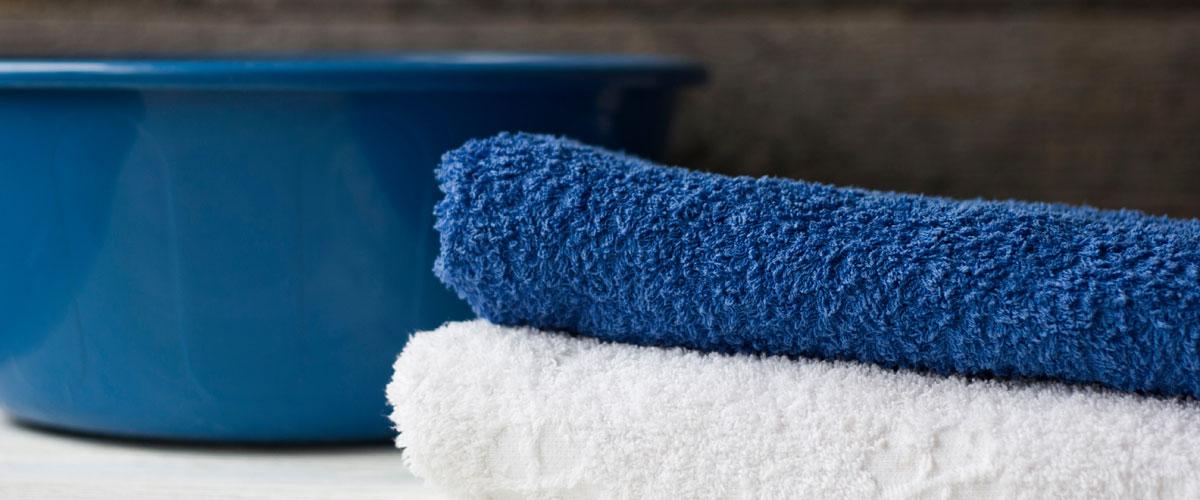In Part I of this blog, we discussed the traditional patient bathing procedure and some of the associated concerns with this method, such as impaired skin integrity, hospital-acquired infections and the repositioning of bedridden patients. But, if the traditional patient bathing procedure is not as effective as we thought, what is the alternative method?
The disposable bath
The disposable bathing method was created in the 1990s and more and more facilities are employing this method, instead of traditional patient bathing. It consists of using 8 washcloths or washing gloves, which are already impregnated with a cleansing solution. Usually, each cloth is used for one designated area of the body and is disposed of after use.
The disposable patient bathing procedure starts with the cleaner parts of the body and ends with the buttocks. The disposable method eliminates the need for water, soap, towels and moisturisers, which can cause the main adverse effects of the traditional bathing procedure. The washcloths or wash gloves usually contain a rinse-free cleaner and emollients, and are mainly made of a cotton-blend fabric. Additionally, disposable washcloths can usually be warmed up in a microwave or in a designated device. Patient preferences and needs can be taken into consideration when deciding whether to warm these cloths.
Why disposable patient bathing?
There are many reasons disposable patient bathing is being chosen over traditional basin bathing. The advantages are as follows:
- Disposable wet cloths/gloves lower the risk of cross-contamination because one cloth is used per body part and also due to the elimination of the basins during the procedure.1
- This patient bathing procedure avoids the risk of a contaminated water supply by eliminating water.
- With disposable wet cloths/gloves, water, soap and towels are eliminated. In addition, the need to go over the patient’s body 3 times (1 time with water, 1 time with a dry towel and 1 time with moisturiser) is reduced to 1 time. This decreases skin dryness and maintains skin integrity.2
- Disposable wet cloths/gloves are much easier to use compared to traditional bathing. They eliminate the preparation and disinfection/laundry steps that traditional bathing includes. Consequently, disposable patient bathing helps save staff time in an environment where the nurse-to-patient ratio is low.
- The disposable patient bathing method is more cost-effective compared to the traditional patient bathing procedure.3,4
Medline solutions for disposable patient bathing
Medline offers various products for patient bathing with easy-to-follow protocols. Our main goal is to enhance infection prevention and provide a practical, consistent bathing procedure for both patients and healthcare providers. Our solutions include dermatologically tested disposable washcloths and wash gloves, shampoo caps and personal cleansing cloths. We also offer intelligent warmers, which keep the patient bathing cloths, wash gloves and shampoo caps at a stable and safe temperature for a nice warm bath.
For more information on Medline’s products, you can check out our online catalogue.


Zeynep Ergeneci
Product Manager ReadyCare, Personal Care, Advanced Wound Care and Repositioning & Offloading, Medline Europe
Zeynep, originally from Turkey, came to the Netherlands in 2020 to complete her Master of Science in Economics. She has graduated in 2021 and completed an internship in sales analysis. After that, she joined Medline Europe and is currently managing Medline’s urology and ReadyCare portfolios. Zeynep has a passion for travelling, exploring new cultures and really enjoys nature. Learn more on Linkedin.
References:
1. Johnson, D., Lineweaver, L., & Maze, L. M. (2009). Patients’ Bath Basins as Potential Sources of Infection: A Multicenter Sampling Study. American Journal of Critical Care, 18(1), 31–40. https://doi.org/10.4037/ajcc2009968
2. Groven, F. M. V., Zwakhalen, S. M. G., Odekerken-Schröder, G., Joosten, E. J. T., & Hamers, J. P. H. (2017). How does washing without water perform compared to the traditional bed bath: a systematic review. BMC Geriatrics, 17(1). https://doi.org/10.1186/s12877-017-0425-4
3. Nøddeskou, L. H., Hemmingsen, L. E., & Hørdam, B. (2014). Elderly patients’ and nurses’ assessment of traditional bed bath compared to prepacked single units - randomised controlled trial. Scandinavian Journal of Caring Sciences, 29(2), 347–352. https://doi.org/10.1111/scs.12170
4. Tai, C. H., Hsieh, T. C., & Lee, R. P. (2021). The Effect of Two Bed Bath Practices in Cost and Vital Signs of Critically Ill Patients. International Journal of Environmental Research and Public Health, 18(2), 816. https://doi.org/10.3390/ijerph18020816



